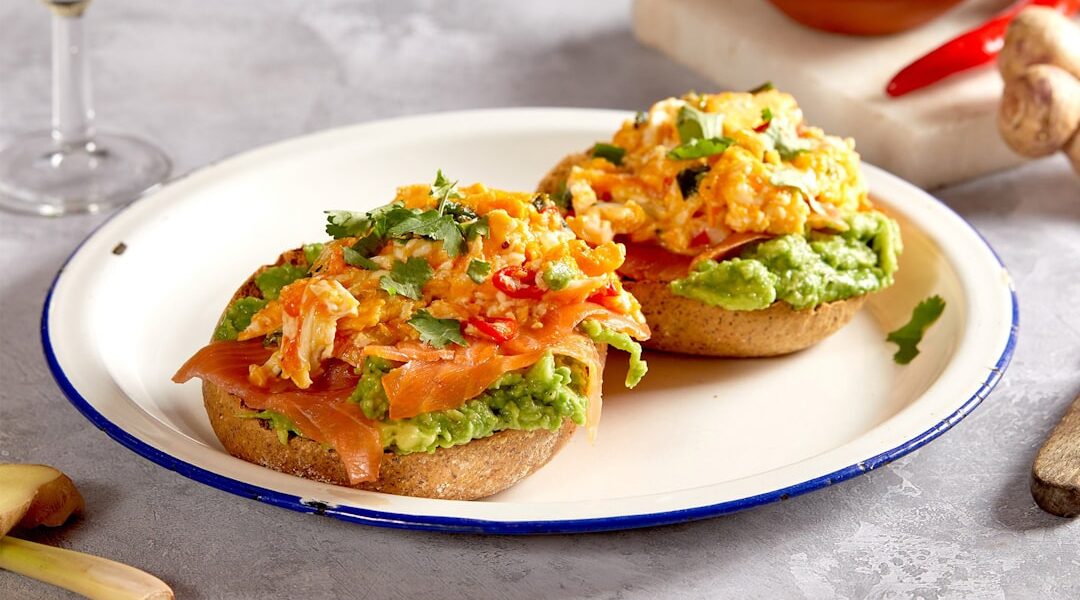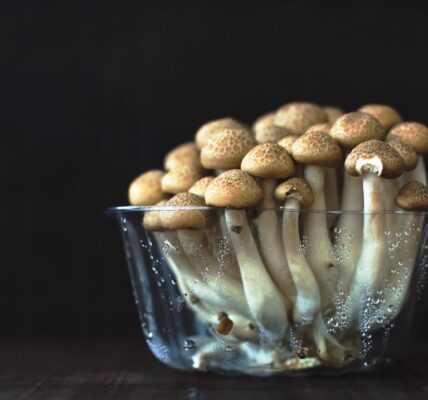Norwegian cuisine is deeply rooted in the country’s history, geography, and climate. With its long coastline, abundant seafood, and harsh winters, traditional Norwegian cuisine is characterized by hearty, warming dishes that make use of locally sourced ingredients. The cuisine is also heavily influenced by the country’s agricultural traditions, with dairy products playing a prominent role in many dishes.
Traditional Norwegian cuisine is known for its simplicity, with an emphasis on preserving the natural flavors of the ingredients. While modern Norwegian cuisine has been influenced by international trends, traditional dishes continue to hold a special place in the hearts of Norwegians and are an important part of the country’s cultural heritage. Norwegian cuisine is often associated with fish and seafood, as the country’s long coastline provides an abundance of fresh and flavorful options.
In addition to seafood, traditional Norwegian cuisine also makes use of game meats such as reindeer, elk, and lamb, as well as a variety of root vegetables that are well-suited to the country’s cold climate. The cuisine is also known for its use of dairy products, particularly cheese and butter, which are integral to many traditional dishes. While Norwegian cuisine may not be as well-known internationally as some other European cuisines, it has a rich and diverse culinary tradition that is worth exploring.
Whether you’re interested in trying classic Norwegian seafood dishes, traditional baking and desserts, or hearty stews and soups, there’s something in Norwegian cuisine to satisfy every palate.
Key Takeaways
- Traditional Norwegian cuisine is characterized by its use of fresh, local ingredients and simple cooking techniques.
- Classic Norwegian seafood dishes, such as gravlaks and lutefisk, showcase the country’s rich maritime heritage.
- Traditional Norwegian baking and desserts feature sweet treats like krumkake, lefse, and riskrem.
- Dairy products, particularly cheese and butter, play a crucial role in Norwegian cooking, adding richness and flavor to many dishes.
- Norwegian pickled and fermented foods, like rakfisk and surströmming, offer unique and bold flavors that are an integral part of the country’s culinary tradition.
Classic Norwegian Seafood Dishes
Classic Norwegian Seafood Dishes
Traditional Norwegian seafood dishes often showcase the natural flavors of the fish and shellfish, with simple preparations that allow the quality of the ingredients to take center stage. One of the most iconic Norwegian seafood dishes is gravlaks, a type of cured salmon that is typically served with a sweet mustard sauce and dill.
Popular Seafood Options
Another beloved seafood dish is fiskesuppe, a creamy fish soup made with a variety of fish and shellfish, along with vegetables and herbs. Fiskesuppe is often served with a dollop of sour cream and a sprinkle of fresh dill, adding richness and freshness to the dish. In addition to salmon and fish soup, Norway is also famous for its pickled herring, which comes in a range of flavors and preparations.
Unique and Traditional Options
Another classic Norwegian seafood dish is lutefisk, which is made from dried whitefish that has been rehydrated in a lye solution. While lutefisk may not appeal to everyone due to its strong flavor and gelatinous texture, it is a cherished dish in Norway and is often served during the holiday season. Whether you’re a fan of cured salmon, creamy fish soup, or pickled herring, Norwegian cuisine offers a diverse range of classic seafood dishes that are sure to delight seafood enthusiasts.
Traditional Norwegian Baking and Desserts

Norwegian baking and desserts are an integral part of the country’s culinary tradition, with a wide variety of sweet treats that are enjoyed throughout the year. Traditional Norwegian baking is characterized by its use of simple ingredients such as flour, sugar, butter, and eggs, which are combined to create a wide range of delicious pastries and desserts. One of the most iconic Norwegian baked goods is lefse, a type of soft flatbread that is made from potatoes, flour, and milk.
Lefse is often served with butter and sugar, or used as a wrap for savory fillings such as cured meats and cheese. Another popular Norwegian pastry is krumkake, a thin waffle-like cookie that is often rolled into a cone shape and filled with whipped cream or jam. Krumkake is a staple at holiday gatherings and special occasions, and is beloved for its delicate texture and sweet flavor.
In addition to lefse and krumkake, Norway is also known for its wide variety of traditional desserts, including riskrem (rice pudding), multekrem (cloudberry cream), and rømmegrøt (sour cream porridge). These desserts often make use of dairy products such as cream and sour cream, which are abundant in Norwegian cuisine. Riskrem, for example, is made by combining rice pudding with whipped cream and sugar, and is often served with a sweet berry sauce.
Multekrem features cloudberries, a tart and flavorful berry that grows wild in Norway’s northern regions, which are combined with whipped cream to create a rich and indulgent dessert. Rømmegrøt is a simple yet comforting dessert made from sour cream, flour, and sugar, and is often served with a sprinkle of cinnamon sugar. Whether you have a sweet tooth or simply enjoy exploring new flavors, traditional Norwegian baking and desserts offer a wide range of delicious options to satisfy any craving.
The Importance of Dairy in Norwegian Cooking
| Importance of Dairy in Norwegian Cooking |
|---|
| Dairy products are a staple in Norwegian cuisine |
| Norwegians consume a high amount of dairy per capita |
| Dairy is used in traditional dishes such as rømmegrøt and brunost |
| Dairy provides essential nutrients like calcium and protein |
| Norwegian dairy industry is a significant part of the economy |
Dairy products play a central role in traditional Norwegian cooking, with butter, cheese, cream, and sour cream featuring prominently in many dishes. Norway has a long history of dairy farming, with cows being raised for their milk and meat in the country’s rural regions. As a result, dairy products have become an integral part of Norwegian cuisine, providing richness, flavor, and texture to a wide variety of dishes.
Butter is particularly important in Norwegian cooking, where it is used for everything from sautéing vegetables to spreading on bread. In addition to butter, Norway is also known for its wide variety of cheeses, including brunost (brown cheese), gjetost (goat cheese), and gammelost (old cheese). These cheeses are often enjoyed on their own or used as ingredients in traditional dishes such as lapskaus (stew) and rømmegrøt (sour cream porridge).
Cream and sour cream are also essential ingredients in many traditional Norwegian dishes, adding richness and depth of flavor to soups, sauces, and desserts. Cream is often used to thicken soups and stews, such as fiskesuppe (fish soup) and lapskaus (stew), while sour cream is used to add tanginess to dishes like rømmegrøt (sour cream porridge) and riskrem (rice pudding). In addition to their culinary uses, dairy products also hold cultural significance in Norway, where they are often enjoyed as part of festive gatherings and celebrations.
Whether you’re indulging in a slice of brunost on freshly baked bread or savoring a bowl of creamy riskrem topped with sweet berry sauce, dairy products are an essential part of the rich tapestry of flavors that make up traditional Norwegian cuisine.
Exploring the Unique Flavors of Norwegian Pickled and Fermented Foods
Pickled and fermented foods have long been an important part of Norwegian cuisine, providing a way to preserve seasonal produce for the long winter months. These preserved foods are not only practical but also add unique flavors and textures to traditional Norwegian dishes. One of the most iconic pickled foods in Norway is surströmming, which is made from fermented herring that has been preserved in brine for several months.
Surströmming has a strong smell and flavor that may be off-putting to some but is beloved by many Norwegians who enjoy its pungent taste. Another popular pickled food in Norway is pickled herring, which comes in a variety of flavors such as mustard, dill, and onion. Pickled herring is often served as an appetizer or snack alongside bread or potatoes.
In addition to pickled foods, fermented foods also play an important role in traditional Norwegian cuisine. Lutefisk, for example, is made from dried whitefish that has been rehydrated in a lye solution before being fermented for several weeks. While lutefisk may not be to everyone’s taste due to its strong flavor and gelatinous texture, it is a beloved dish in Norway and is often served during the holiday season.
Fermented dairy products such as yogurt and kefir are also popular in Norway, providing probiotic benefits along with their tangy flavor. Whether you’re sampling pickled herring or trying lutefisk for the first time, exploring the unique flavors of Norwegian pickled and fermented foods offers an opportunity to experience the rich culinary traditions of the country.
Norwegian Comfort Foods: Hearty Stews and Soups

Hearty Stews
One of the most iconic Norwegian comfort foods is lapskaus, a rich stew made from a combination of meat (such as beef or lamb), potatoes, carrots, onions, and sometimes cabbage. Lapskaus is often flavored with simple seasonings such as salt and pepper, allowing the natural flavors of the ingredients to shine through. Another popular comfort food in Norway is fårikål, a stew made from lamb meat and cabbage that is seasoned with black pepper and cooked slowly until tender.
Soups to Warm the Soul
In addition to stews, soups are also an integral part of Norwegian comfort food tradition. Fiskesuppe (fish soup) is a classic Norwegian dish that features a creamy broth filled with chunks of fish and shellfish along with vegetables such as carrots and leeks. Fiskesuppe is often served with a dollop of sour cream and a sprinkle of fresh dill, adding richness and freshness to the dish. Another popular soup in Norway is ertesuppe (pea soup), which is made from dried peas cooked with ham hock or bacon until thick and flavorful.
Comforting Traditions
Whether you’re craving a hearty stew or a comforting bowl of soup, traditional Norwegian comfort foods offer a satisfying way to warm up on cold winter days. These comforting dishes are deeply rooted in Norwegian culture and are often enjoyed with family and friends during the winter months.
Modern Twists on Traditional Norwegian Recipes
While traditional Norwegian cuisine holds a special place in the hearts of many Norwegians, modern chefs are putting their own twists on classic recipes to create innovative dishes that reflect contemporary tastes and culinary trends. One example of this modern approach to traditional recipes can be seen in the use of local ingredients such as cloudberries and sea buckthorn berries in new and inventive ways. These unique flavors add depth and complexity to dishes while also highlighting Norway’s rich natural bounty.
In addition to incorporating new ingredients into traditional recipes, modern chefs are also experimenting with different cooking techniques to create innovative dishes that push the boundaries of traditional Norwegian cuisine. For example, sous vide cooking has become increasingly popular in Norway’s culinary scene, allowing chefs to create perfectly cooked meats and fish with precise temperature control. This modern approach to cooking has led to new interpretations of classic dishes such as gravlaks (cured salmon) and fårikål (lamb stew), adding a contemporary twist to beloved recipes.
Furthermore, modern chefs are also drawing inspiration from international cuisines to create fusion dishes that combine traditional Norwegian flavors with global influences. This blending of culinary traditions has led to exciting new dishes that showcase the diversity of flavors found in modern Norwegian cuisine. In conclusion, traditional Norwegian cuisine offers a rich tapestry of flavors that reflect the country’s history, geography, and cultural traditions.
From classic seafood dishes to hearty stews and soups, Norwegian cuisine provides a diverse array of culinary delights that are sure to satisfy any palate. While traditional recipes hold a special place in the hearts of many Norwegians, modern chefs are putting their own twists on classic dishes to create innovative recipes that reflect contemporary tastes while still honoring the country’s culinary heritage. Whether you’re indulging in pickled herring or savoring a comforting bowl of fårikål stew, exploring the unique flavors of traditional Norwegian cuisine offers an opportunity to experience the rich culinary traditions of this beautiful country.
If you’re interested in exploring more Norwegian recipes, you should check out this article on traditional Norwegian dishes from The Muser Camp. They offer a variety of authentic recipes that showcase the flavors and ingredients of Norway, allowing you to bring a taste of the country into your own kitchen. Whether you’re looking to make classic dishes like lefse or krumkake, or want to try something new like rakfisk or lutefisk, this article is a great resource for anyone wanting to delve into Norwegian cuisine.
FAQs
What are some traditional Norwegian dishes?
Some traditional Norwegian dishes include lutefisk (dried whitefish reconstituted in a lye solution), fårikål (lamb and cabbage stew), raspeballer (potato dumplings), and rømmegrøt (sour cream porridge).
What are some popular Norwegian desserts?
Popular Norwegian desserts include krumkake (thin waffle cookies), lefse (soft flatbread), riskrem (rice pudding with whipped cream and raspberry sauce), and multekrem (cloudberry cream).
What are some common ingredients used in Norwegian cooking?
Common ingredients used in Norwegian cooking include fish (especially salmon and herring), potatoes, root vegetables, berries (such as lingonberries and cloudberries), and dairy products like sour cream and cheese.
Are there any specific cooking techniques used in Norwegian cuisine?
Some specific cooking techniques used in Norwegian cuisine include smoking and curing fish, as well as preserving meats and vegetables through methods like pickling and fermentation.
What is a traditional Norwegian breakfast like?
A traditional Norwegian breakfast often includes open-faced sandwiches with toppings like cheese, cold cuts, and fish, as well as yogurt, muesli, and boiled eggs. It may also include coffee and a variety of breads and pastries.




